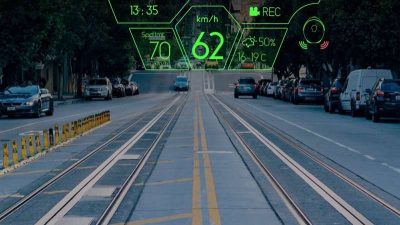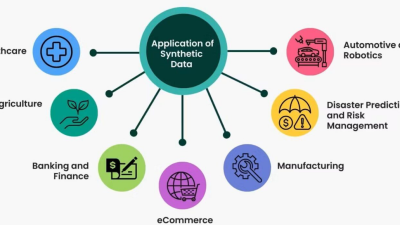Augmented reality has already transformed how we interact with digital information. From smartphone apps to specialized headsets, AR overlays digital content onto our physical world. But current AR systems face significant limitations in processing power, rendering capabilities, and real-time interactions.
Enter quantum computing. This revolutionary technology operates on principles fundamentally different from classical computing. Instead of binary bits, quantum computers use qubits that can exist in multiple states simultaneously through a phenomenon called superposition.
For AR systems, this difference isn’t just academic—it’s transformative.
Processing Power That Defies Imagination
Traditional AR devices struggle with complex simulations and detailed rendering. Your smartphone might heat up when running AR apps for extended periods. Headsets often sacrifice graphic quality for performance.
Quantum computers can process vastly more information simultaneously. This capability means future AR systems could render photorealistic environments with physics-based interactions in real-time.
The difference would be striking. Imagine AR applications that don’t just overlay simplistic graphics but create convincing digital objects indistinguishable from physical ones.
Breaking Down Current Barriers
Today’s AR faces numerous technical challenges. Battery life remains limited. Processing must often happen in the cloud, creating latency issues. Environment mapping requires significant computational resources.
Quantum processing could solve these problems through more efficient algorithms. Quantum-enhanced devices could map complex environments instantly, identifying surfaces, objects, and spatial relationships with unprecedented accuracy.
As we’ve discussed at AR Marketing Tips, these advances would revolutionize marketing applications by enabling truly seamless integration of virtual products into real environments.
Quantum Machine Learning for Context-Aware AR
Perhaps the most exciting possibility lies in quantum machine learning algorithms that could understand user context at levels impossible today.
Current AR systems have limited awareness of user intent and environmental context. They recognize basic patterns but miss subtle cues that humans naturally perceive.
Quantum machine learning could enable AR systems to interpret complex scenes, understand social dynamics, and predict user needs before they’re expressed. Your AR glasses might recognize not just that you’re in a grocery store, but that you’re looking for ingredients for tonight’s dinner while adhering to dietary restrictions.
Quantum Encryption for AR Privacy
Privacy concerns have hindered AR adoption. Users worry about constant environmental scanning and data collection. Quantum cryptography offers a solution through fundamentally unbreakable encryption methods.
Future AR systems could implement quantum key distribution to secure the constant stream of sensitive visual data they collect. This advancement would build user trust while allowing for more powerful features that require environmental understanding.
Timeline for Implementation
When might we see quantum-enhanced AR systems? The journey has already begun through hybrid approaches.
Quantum-inspired algorithms are being implemented on classical computers today. These algorithms mimic certain quantum properties to achieve improved performance without requiring actual quantum hardware.
Full quantum AR systems remain several years away. Quantum computers currently require specialized environments and haven’t reached the miniaturization needed for mobile devices. However, cloud-based quantum processing could supplement AR devices within the next 5-7 years.
The Transformative Impact
The convergence of quantum computing and augmented reality will transform industries beyond entertainment and gaming.
Healthcare professionals could visualize complex biological processes in real-time. Engineers could simulate and test designs in physical space with quantum-level accuracy. Educational systems could render historical events or scientific concepts with unprecedented fidelity.
For businesses, this means preparation should begin now. Understanding quantum computing’s potential impact on AR experiences will be crucial for staying competitive in the coming technology landscape.
The Path Forward
As quantum computing continues to mature, AR developers should focus on creating flexible systems that can leverage quantum advantages when available. This preparation involves designing software architectures that can distribute processing between local devices and quantum-enabled cloud services.
The companies that succeed in the quantum AR future will be those that understand both technologies’ strengths and limitations. They’ll develop experiences that leverage quantum capabilities without becoming entirely dependent on them.
The quantum revolution in augmented reality isn’t just about more powerful hardware—it’s about reimagining what AR can be when processing limitations disappear.
As these technologies converge, we’ll experience a world where digital and physical reality blend seamlessly, powered by computing capabilities that once seemed impossible.





